Wetpixel asks the Pros: Wide-angle 1
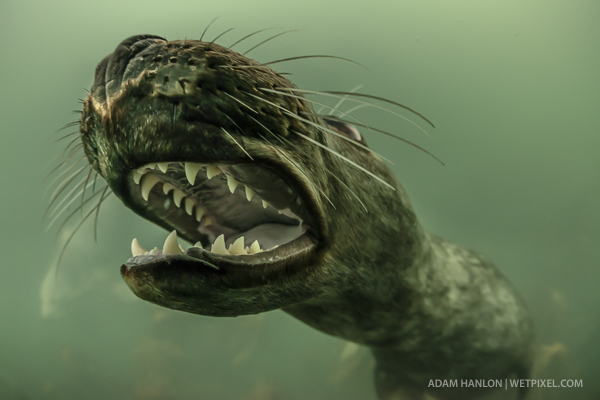
Douglas Seifert
Douglas Seifert, World Editor at DIVE MAGAZINE, is the creator of Water Column — a regular feature in DIVE MAGAZINE showcasing in-depth natural history subjects and conservation features in words and images. He has been a published writer and award winning photographer of the underwater world for over 20 years.
What is you favorite wide-angle lens (please also specify with which camera-more than one answer is allowed :))?
Currently, I am really enjoying using my 20 year old 13mm Nikonos RS lens again which was adapted for the Nikon D800/D810 in Seacam by Harald Hordosch and Borut Furlan. Its not as wide as the Sigma 15mm lens, my previous favorite lens on both Canon and Nikons, but the images are stunning regardless of aperture. There is also a bit less distortion, the bane and/or draw of wide angle lenses. A 15mm fisheye with a teleconverter can be useful for smaller subjects. I adapted the Tokina 10-17mm to work (partially) on both Canon and Nikon full frames for exceptional close focus wide angle situations.
I like using my 30 year old 15mm Nikonos lens adapted for use with the Sony A7R. I haven’t used it as much as I would like, its not the first camera/lens I grab because I haven’t experimented enough with it and when you are on location and the action is hot, not the best time for tinkering.
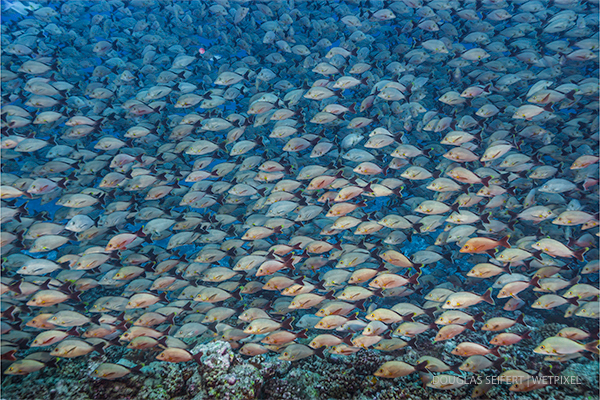
When I was shooting Canon (and who is to say I won’t go back again), I relied heavily on the 16–35mm zoom, the 15mm Sigma and for a while, the 8-15mm zoom. The 8mm can be used to make some interesting images but very quickly becomes gimmicky when overused. I did experiment with using the lens in between the 15mm and 8mm extremes to get more of a wide angle, then cropping out the vignetting. Sometimes it worked and sometimes it didn’t.
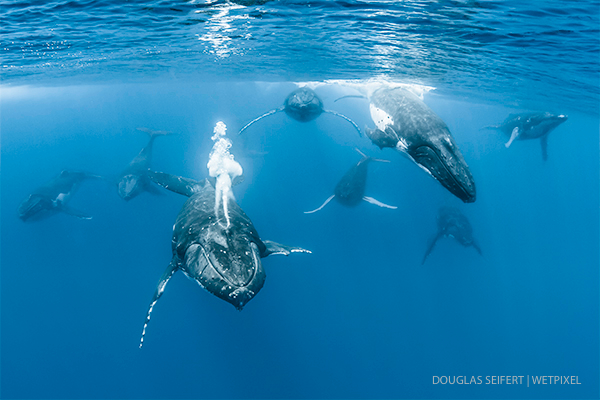
More and more, I find myself using the wide angle to achieve a subject with fine detail but reduced in size in the frame, essentially cropping out the subject to utilize more negative space.
Do you prefer the look of fisheye or rectilinear wide-angle?
It depends really and the criteria is always changing. It’s a wholly artistic choice. How much does one wish the subject to remain true to the natural world and how much does one push it for a broader audience? When does a lens effect become conspicuous? Fortunately there are not so many straight lines underwater but still there is an inherent sense of perspective and it can be more pleasing to the eye to minimize distortion and at other times, distortion can be fun to play with, in moderation.
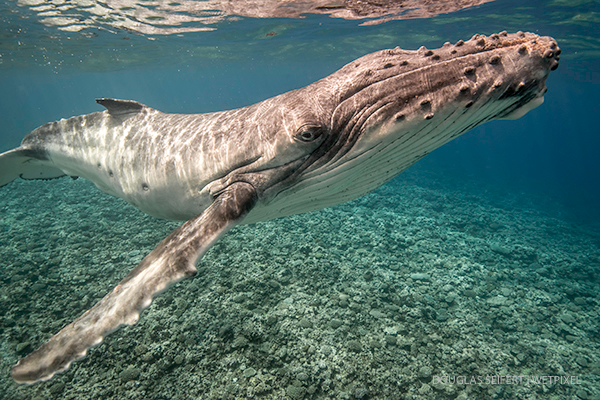
And we are often reduced in our choices by the visibility of the water (forcing one into a fisheye when a rectilinear might be more preferable) or by the distance between the camera and the subject. Some subjects can be difficult to control: the dance between getting close, but not too close, into the Goldilocks Zone. Sharks, for example, in the presence of bait or scent stimuli, often get closer to the photographer than makes for a natural looking, thoughtfully composed image and instead it is a case of use the fisheye or get overwhelmed. Many is the time when the 16mm end of the zoom just is not wide enough as a shark moves forward to the camera and swimming backwards to achieve better framing just isn’t a possibility. Harder still if one is in an anti-shark cage.
The other drawback to reliance on fisheyes is the arguably necessary intrusion into the zone of comfort of the marine subject itself. I wrote about this for DAN Alert Diver, but without the emphasis on photographers, at the editor’s request. An ambitious photographer/videographer can have a tremendous, behavior- or life-altering impact on the marine life by nature of the shooter’s very intrusive presence and exhalation of bubbles. Now put a fisheye in a person’s hands and send them into certain situations and anything can happen: manta rays chased off cleaning stations; whale sharks chased into the abyss; octopus ducking into the safety of a crevice; schooling fish sent out into the blue…
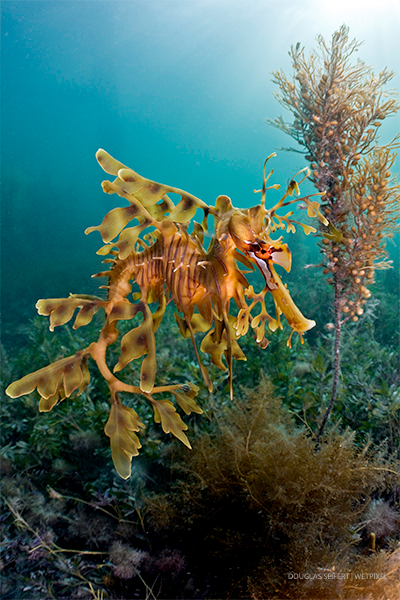
Discretion and a dollop of situational awareness can usually make this a benign encounter for the sealife, but humans, all of us, are clumsy underwater, even with the best of intentions. Accidents happen, from broken coral and bumped gorgonians to startled fish being victimize by patient ambush predators. Anything is possible, but an attempt to minimize the intrusion by shooting less wide and a bit further back can make a huge difference.
The one thing I really do not like to see, especially indiscriminately posted to social media – or worse the yellow journalism schlock shop “agencies” (Barcroft, Solent, etc) – is using excessive distortion to make marine animals look ugly or freakish. In particular, horrible photographic atrocities have been published of our less svelte marine friends – the manatee and the mola mola come to mind – as well as some truly gratuitous shark porn.
There seems to be a belief in some minds that mega distortion means the photographer got real, real close which means better. Of course, its really is a matter of what works and what doesn’t. If one’s goal is to make marine animals look ugly or freakish, barrel distortion is a terrific way to go. But mightn’t the image be more pleasing if the animal is presented as it is with its own unique animal charisma? I have yet to see a natural history equivalent of Diane Arbus but plenty of stalkerazzi deer-in-the-headlights imagery.
How do you light wide-angle images or video? What metering pattern do you use? TTL or manual strobe control?
Its always a balance between ambient light and fill lighting. I do shoot manual exclusively. I meter off the midwater, just like Howard hall taught me. A carry-over from the slide film days decades ago.
Do you “expose to the right”? Does this technique work/apply for video shooters?
Exposing to the right is always preferable. The worry about blowing out specular highlights is negligible – white can be pure white, especially if it’s a minor part of the image.
What are your “go-to” wide-angle exposure settings? How is your camera set up when you get off the boat?
With big animals and natural light, especially with whales, I go in with shutter priority/time value set to a pretty high shutter speed. 1/250th or better if the conditions allow. Its important to freeze the action for a crisp image. The animals are moving; the photographer is moving; the surface is moving. I am also going to make certain my ISO is high enough, 400-800 in Nikon; 640 in Canon to make certain my aperture is hovering around f/8 or better. f/11-f/16 is even better. And I always manually focus, pre-focusing sometimes but always ready to change if the situation demands.
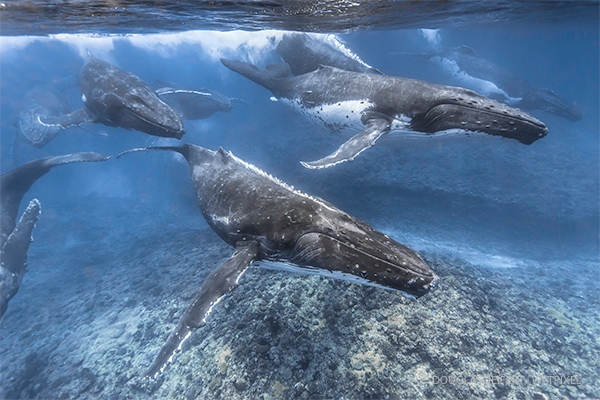
When shooting large animals in the blue (green) do you worry about corner sharpness?
Corner sharpness is always problematic, unless one specializes in bulls-eye photography of the subject. I try to have off center compositions as much as possible, so corner sharpness problems can be very real worries if it causes part(s) of the animal to become distractions.
Under what situations would you use shutter priority or aperture priority wile shooting wide angle? (see answer above)
Daniel Botelho
Daniel Botelho is a photographer of the National Geographic Society, the Walt Disney Company, and Mergulho magazine. He contributes to magazines such as Time, BBC Wildlife, and as liaison of the site yahoo.com and the New York Times.
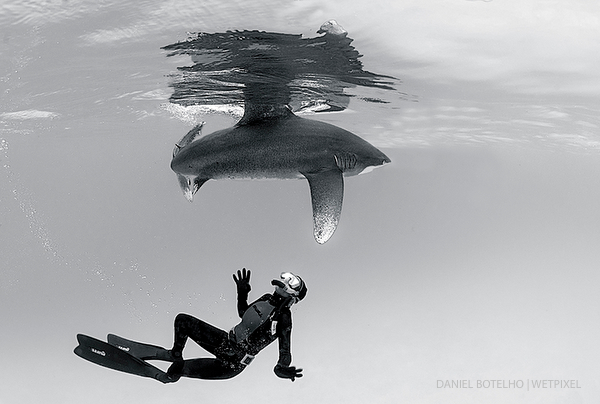
What is you favorite wide-angle lens (please also specify with which camera-more than one answer is allowed :))?
My favorite lens is the Nikkor 16mm FX fisheye, and nowadays I am using it with a Nikon D4S. I love the Nikkor 14-24mm FX as well, its wonderful piece of glass but it demands me to use the 12” conical dome port and that makes my rig too heavy and too big, causing lots of drag, so I use this only on special occasions.
Do you prefer the look of fisheye or rectilinear wide-angle?
Personally I prefer the look of the fisheye, but National Geographic editors are always fighting with me cause they prefer the rectilinear, I am always looking for the middle ground of satisfying myself and the photo editors! I tend to deliver half of the shots mede by the 16mm fisheye and the other half with the 14mm fixed or the 14-24mm to keep them happy….
How do you light wide-angle images or video? What metering pattern do you use? TTL or manual strobe control?
The strobe lighting must go together with the natural light, they need to play together, so the natural light rules and the strobes are manually set according to my camera’l light meter. Both camera and strobes are full manually controlled.
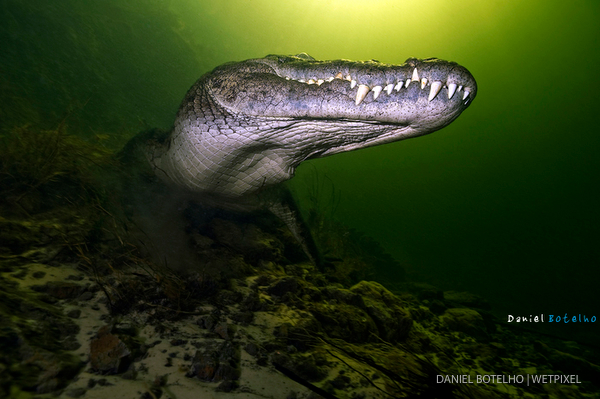
Do you “expose to the right”? Does this technique work/apply for video shooters?
I believe that the exposing to the right can create good results on average and it is what I use most of the time. Sometimes, however, in more journalistic shoots, you need to show the true environment you are in and this can give better results then the exposing to the right technique. My opinion is that training to expose to the right is very important so when photographers have full control on this technique, they can start experimenting with exposure. Hence, it is a good foundation for all photographer´s skills as we need to first learn by the rules so after mastering the foundations we can start breaking the rules, playing with the settings.
What are your “go-to” wide-angle exposure settings? How is your camera set up when you get off the boat?
It depends a lot on light conditions and type of animal and or environment I am shooting. Basically I concentrate on using the best lens aperture and aim to work between f9 to f12, managing shutter speed and ISO case by case.
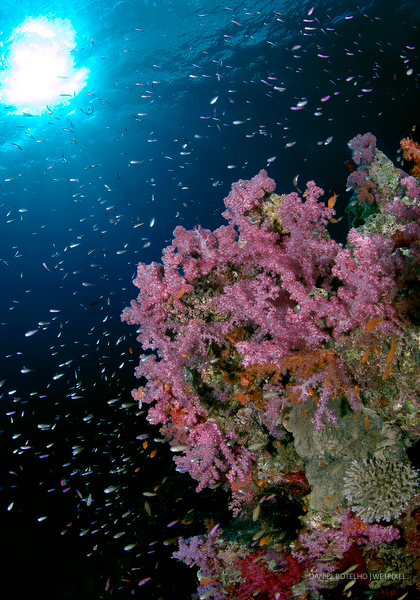
When shooting large animals in the blue (green) do you worry about corner sharpness?
Yes sharpness is a big deal to me, because of dome port limitation, certain lens like the Nikkor 14mm can ruin the edges with lower apertures than f8.
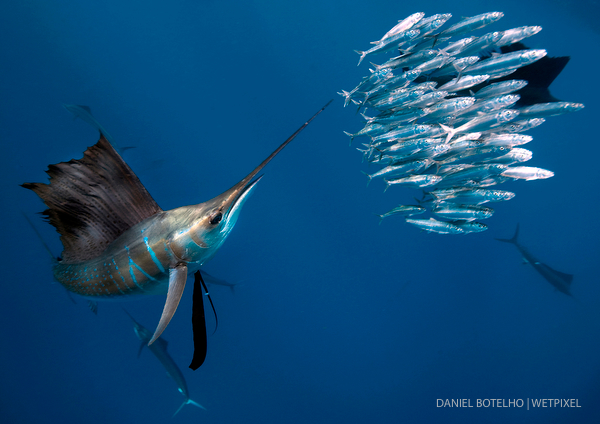
Under what situations would you use shutter priority or aperture priority wile shooting wide angle?
Never! I never delegate setting decisions to my camera´s software. I always keep full manual control of the camera.
Tony Wu
Tony Wu is permanently disoriented and more often than not, waterlogged. See his journal for miscellaneous ramblings and occasional images.
What is you favorite wide-angle lens (please also specify with which camera-more than one answer is allowed :))?
Fisheye lenses. The Canon 15mm f2.8 has been a reliable lens for me on my full-frame Canon DSLR bodies (currently 5D MkIII cameras). Both copies of this lens that I own have become tired from overuse though, so I’ve recently started using the Sigma 15mm f2.8 fisheye. I have the Canon 8-15mm f4 as well, though I prefer using a prime lens, and I’m very much not a fan of the porthole fisheye gimmick that this lens can produce with a full-frame camera. As a result, I mostly use the 8-15mm f4 with my Canon 7D Mk II, with the zoom limit setting turned on. I have a Tokina 10-17mm f3.5-4.5 zoom lens too, which I keep as a backup for my cropped sensor bodies.
Do you prefer the look of fisheye or rectilinear wide-angle?
Fisheye.
How do you light wide-angle images or video? What metering pattern do you use? TTL or manual strobe control?
Everything manual. Manual exposure for the camera. Manual exposure for all strobes.
Do you “expose to the right”? Does this technique work/apply for video shooters?
Slightly. I started with film—shooting positives (slides)—when it was important to get the exposure exactly right. There is more leeway with digital exposures, and exposing to the right has some theoretical advantages. It’s tough to break old habits though. I find that I mostly try to expose exactly right, plus maybe a little bit to the right.
What are your “go-to” wide-angle exposure settings? How is your camera set up when you get off the boat?
I don’t have any standard settings. The most important thing for me is to think about the situation I’m likely to encounter, set my camera and strobes accordingly, and know what my settings are when I jump in. In other words, rather than having a set formula, I concentrate on committing the settings I’ve chosen for a given situation to memory, so that I can adjust quickly when necessary.
When shooting large animals in the blue (green) do you worry about corner sharpness?
Nope. Of course I prefer to have the sharpest corners possible, but my attention is 100% on the animals.
Under what situations would you use shutter priority or aperture priority wile shooting wide angle?
Shutter priority - when speed is the key element, like you and your subject are both moving really fast and you need to freeze the action. Aperture priority - when depth of field is most important, like shooting a reef scenic when you’re not moving at all. That’s what those two shooting modes are for!
I tend not to use Aperture priority though. If I’m in a situation with a non-moving subject, and I’m also not moving, I’d much rather go Manual and control every aspect of the exposure.
Franco Banfi
Franco Banfi is a professional wildlife photographer and photo-journalist, well known for his expertise and accuracy in underwater imaging. Recently he specialized in leading photo expeditions and in giving workshops and seminars about photography in different locations.
What is you favorite wide-angle lens (please also specify with which camera-more than one answer is allowed :))?

My favorite wide-angle lens is EF15mm f/2.8 Fisheye with the super dome Seacam and EF8-15mm f/4L Fisheye USM with the micro dome Seacam. The camera I use is the Canon EOS 5D Mark III .
Do you prefer the look of fisheye or rectilinear wide-angle?
I prefer the look of the fisheye, because of its excellent corner sharpness even on a full-frame body. I haven’t find so far a lens that can give me the same result like the fisheye, in term of sharpness, color. If you manage The distance you don’t necessarily have a highly distorted image.
How do you light wide-angle images or video? What metering pattern do you use? TTL or manual strobe control?
I use 2 x Seaflash 150 strobes. Most of the time I use them manually but in situation where speed is important and distance change fast I use them also TTL.

Do you “expose to the right”? Does this technique work/apply for video shooters?
I don’t use the “expose to the right”. I try to expose in the way that al my histogram is complete from 0 to 255. Every time I start shooting a subject I take care to the histogram to have as much information as possible and to precise in the exposure. This will give me less postproduction work. Of course it depends from the situation and sometime if I see that I need to push more on the right I will adjust the camera to optain the right result.
What are your “go-to” wide-angle exposure settings? How is your camera set up when you get off the boat?
This is dependent from the subjects. Slow motion subjects I start with 1/60 f/8, but I can go down to 1/30 or even more. Fast subiect with strobes I try to use my max speed syncro 1/200 with f/stop between f/5.6 and f/11. Fast subject without strobes 1/500 f/5.6 and I will adjust the ISO accordingly.
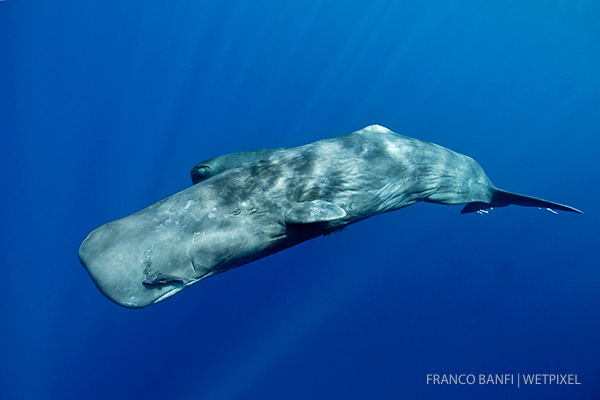
When shooting large animals in the blue (green) do you worry about corner sharpness?
Not really. Most of the time you don’t have any subject in the corners. If the main subjecT is correctly in focus, I find the corner sharpness insignificant. Sometime even better if they are out of focus.
Under what situations would you use shutter priority or aperture priority wile shooting wide angle?
I would use shutter priority with fast moving action if I don’t want any blur. I would use aperture priority only if I don’t use strobes.
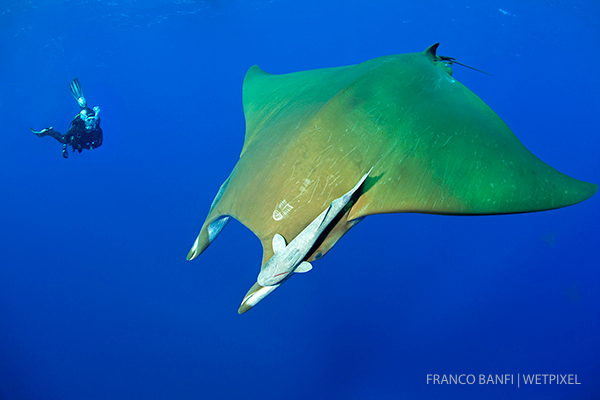
wide-angle photography is more challenging with the use of the lens, strobes, natural light, setting and subject. It is for this reason that I prefer wide-angle photography.
Steve Jones
Steve Jones is an internationally published photojournalist, professionally active since 1996.
What is you favorite wide-angle lens (please also specify with which camera-more than one answer is allowed :))?
My current favorite is the SEACAM converted Nikon RS AF-UW 13mm fisheye, mounted on the Nikon D4. A lot of my photography is done with natural light in deep and dark waters (necessitating high ISO’s and wide open apertures), and this lens has no peers at F2.8 on a full frame camera – it is excellent. I shoot FX format because DX cameras do not currently have the high ISO performance that I need, since I frequently shoot above ISO9000 on this type of dive. This lens also has the advantage of being very small (not much bigger than a mini-dome actually) so less vulnerable to damage when clanking around with all that tech diving gear!
Do you prefer the look of fisheye or rectilinear wide-angle?
Fisheye
How do you light wide-angle images or video? What metering pattern do you use? TTL or manual strobe control?
For balanced lighting applications where I’m blending strobe and natural light I generally use twin strobes (unless I am just selectively or directionally lighting my subject). I use the cameras spot meter to measure the ambient light at various points in the scene – particularly the mid water column, then I set camera and strobe power settings manually to ensure a correct exposure, one where the artificial light compliments the natural light in the scene. I ensure I have a good strobe aim, using the edges of the beam to light the main subject and thus avoiding lighting the water column. Positioning of the strobes will depend on where I want my shadows and highlights, but generally my default positions are at 2 o’clock and 10 o’clock to the right and left of my camera and of course behind the field of view of the lens! My favorite strobes are SEACAM S150D which have very wide beams, a nice warm color temperature, multiple power settings and fast recycle times.

For my deep wreck photography, which is available light or off camera continuous lighting (ie. high powered Lamps), I use matrix metering and I often make use of Aperture or Shutter Priority, as it reduces task loading on me on already heavily task loaded dives! I’ll use this in conjunction with auto ISO, programming the camera to raise the ISO automatically if the camera drops below 1/30th @ F2.8 (this happens often on the deep wrecks in the English Channel!). Again, this just lets the camera do one job for me that otherwise I would have to think about. However, if I am using extremely powerful off camera continuous lighting such as the Orcalight, I will normally shoot manual, using the cameras viewfinder meter and the histogram to guide me.
Do you “expose to the right”? Does this technique work/apply for video shooters?
I tend not to, as whilst there are advantages using this technique, it adds a task in post processing that I simply do not have time to do. I try and get the RAW file as close to the final image as I can.
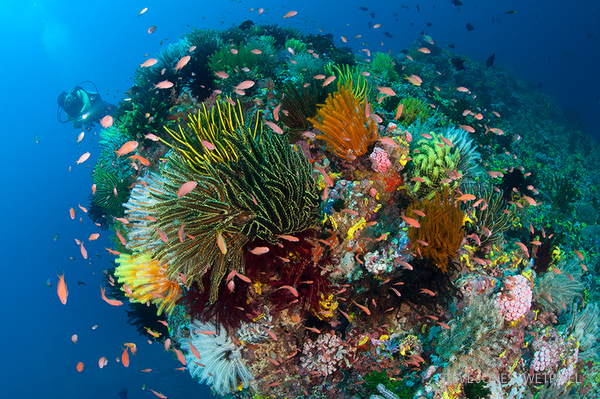
What are your “go-to” wide-angle exposure settings? How is your camera set up when you get off the boat?
When shooting brightly lit tropical seascapes with strobes, generally around F8 @ 1/160th @ ISO 200, but I always look at the conditions before I dive and take it from there. For early morning or overcast skies I may lower the shutter speed or adjust other settings accordingly to compensate. So I wouldn’t really say I have “go-to” settings, rather I will pivot around these settings depending on what’s going on with the water clarity, depth, amount of sunlight. I’ll typically have my strobe power set to light a scene around 75cm from the camera
For deep wrecks, it’s a different ball game. I don’t use strobes but typically my settings for a deep (60 meter plus) English Channel dive with around 8 meters viz would be F3.5, 1/40th, ISO3200. Poor light could change this to F2.8, 1/15th, ISO12800!
When shooting large animals in the blue (green) do you worry about corner sharpness?
No
Under what situations would you use shutter priority or aperture priority wile shooting wide angle?
Only if I’m shooting with no strobes on deep wrecks, and even then I often use manual. If shooting with strobes I always shoot manual, no exceptions.
Alex Tattersall
Alex is an award-winning and widely published underwater photographer. He is also the proprietor of Underwater Visions and a distributer of Nauticam products.

What is you favorite wide-angle lens (please also specify with which camera-more than one answer is allowed :))?
Fisheye, Sigma 15mm on Nikon full frame, Panasonic 8mm on 4/3, Tokina 10-17 on DX.
I particularly enjoy Close Focus Wide Angle style of wide photography and often will use a Kenko 1.4x teleconvertor with the fisheye lens to reduce the barrel distortion and reduce the angle of view slightly. I’ll do this particularly in less favorable weather conditions to help the camera manage the dynamic range.
Do you prefer the look of fisheye or rectilinear wide-angle?
Depends on the situation but I prefer the practicality of not carrying a very large dome so mostly use fisheye.
How do you light wide-angle images or video? What metering pattern do you use? TTL or manual strobe control?
Manual settings, generally twin INON Z240s with -0.5 diffusers.
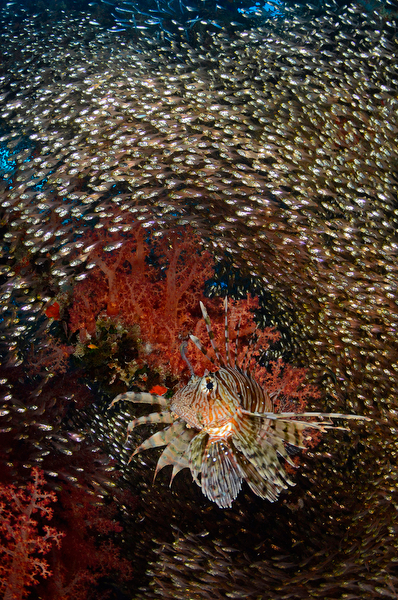
Do you “expose to the right”? (http://en.wikipedia.org/wiki/Exposing_to_the_right). Does this technique work/apply for video shooters?
No, I don’t tend to. I don’t work off histograms generally.
What are your “go-to” wide-angle exposure settings? How is your camera set up when you get off the boat?
Depends but as I prefer using mini domes, I will not tend to open up beyond F11 for corner performance and will adjust ISO according to what the camera I am using can take. Shutter speed as high as possible generally but depends on the subject and the camera.
When shooting large animals in the blue (green) do you worry about corner sharpness?
I still keep my settings around the F11 depending on the dome and camera. I always concern myself with corner sharpness, I find nothing more ugly than out of focus corners.
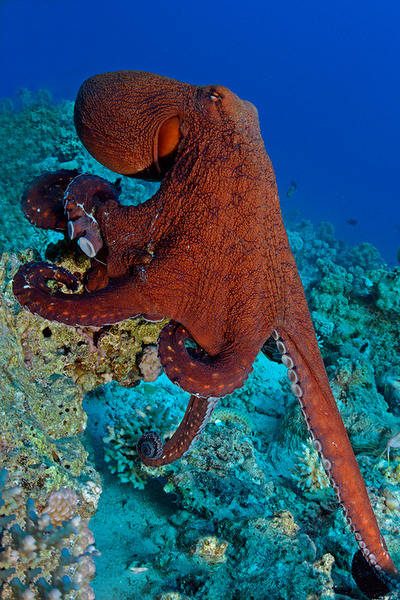
Under what situations would you use shutter priority or aperture priority wile shooting wide angle?
Shutter priority for fast moving animals such as sea lions and dolphins or when on snorkel. Otherwise I tend to use manual.
- Amanda Cotton, Julian Cohen, Rico Besserdich, Jean Bruneau, David Barrio, Viktor Lyagushkin
- Cristian Dimitrius, David Salvatori, David Fleetham, Berkley White, Allison Vitsky Sallmon and Andy Sallmon, Norbert Wu
- Douglas Seifert, Daniel Botelho, Tony Wu, Franco Banfi, Steve Jones, Alex Tattersall